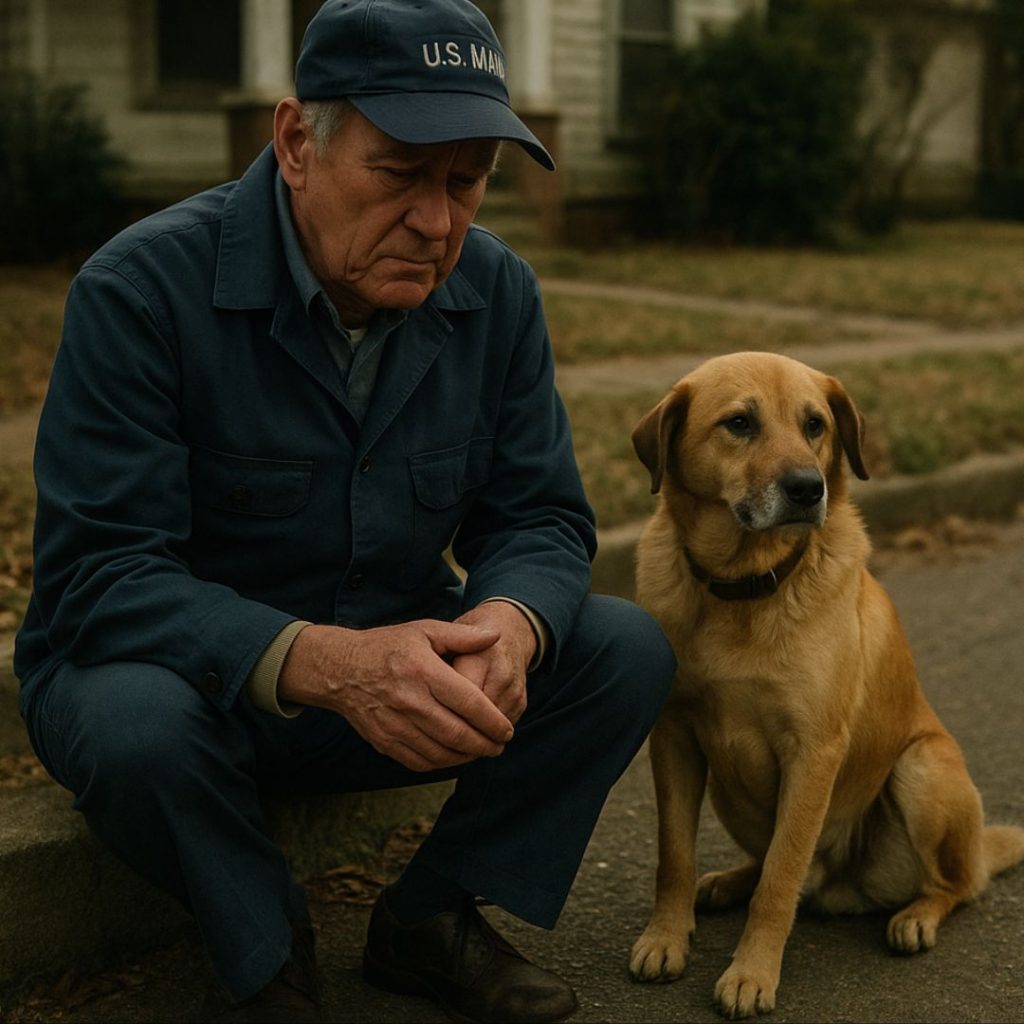Part 9: The Auction Lot
It started with a phone call from a woman named Doreen Russell.
Eli had just returned from a school visit in Oregon when the message came through:
“I think I have something that belongs to the boy in your book.”
He called back immediately. Doreen explained that she was an estate auctioneer based in Pahrump, Nevada. A week prior, she’d been preparing items from a deceased Gulf War veteran’s storage unit when she discovered an old metal ammunition box buried beneath tools and rusted camping gear.
Inside, among old ration tins and water-damaged letters, was a leather pouch containing a folded, hand-stitched cloth with Arabic embroidery and a faded drawing on handmade paper.
“The boy,” Doreen said. “He’s drawing in the picture. Kneeling. There’s a camel behind him. It’s… it’s the same boy from your book, I swear.”
Eli’s hand trembled as he wrote down the details.
“Was there a name?” he asked.
“No name,” she said. “But the initials R.J.S. were etched on the inside of the box lid.”
Jason’s full name: Jason Michael Grady.
R.J.S.
Not him.
Eli paused. “Do you know who owned the storage unit?”
She rifled through her files. “Yes—Ret. Staff Sergeant Ronald J. Spencer. Deceased. Died two months ago. Cancer.”
Eli’s chest tightened.
Jason’s unit.
Another silent carrier.
—
Eli drove through the Nevada desert in a rental car that rattled like old bones. As he crossed into Pahrump, the sun hung low over red-dusted ridges, the wind sharp against the glass. He arrived at Doreen’s lot behind a warehouse—a gravel patch surrounded by rusting trailers and desert silence.
She met him in the doorway, silver hair in a bun, clipboard clutched to her chest. “You’re the artist,” she said, almost reverently.
“I’m just a messenger,” Eli replied. “Can I see it?”
She led him to a table inside, where the ammo box sat open. Inside, wrapped in a torn piece of canvas, was the cloth—sand-colored, rough-edged, with black thread stitched into the border in a looping script.
Eli didn’t recognize the language, but the drawing it cradled was unmistakable.
Azzam.
But not like before.
This time, he was older. Taller. Standing upright, hand resting on the head of the camel. His eyes looked out from the page—not downcast, not cautious—but proud.
There was power in that face.
A signature at the bottom. A date. April 1991.
The page was signed in Arabic, then translated below in pencil:
“Draw me standing. I want to be remembered that way.”
Eli swallowed.
This wasn’t Jason’s hand. It wasn’t one of the sketches from the book.
This had been Azzam’s request. Maybe his last.
“Did Jason ever mention this to you?” he asked Doreen.
She shook her head. “Not to me. But the box also had a cassette tape. I haven’t played it—it’s labeled ‘Camp Thunder — Day 42.’”
Eli plugged it into an old player she provided.
The tape crackled. Then came Jason’s voice, faint and slow.
“April 9. The kid asked me to draw him standing today. Said he wanted to ‘look like a man.’ I told him I’d try. But I think he meant something else. I think he’s tired of being seen as the one we failed. He wants to be more than memory. He wants to be hope.”
Silence followed. A distant cough. Then the tape stopped.
—
That night, Eli couldn’t sleep. He sat in a motel room with the sketch laid across the bed, the cassette beside him, and the moonlight bleeding through the blinds like slow water.
He took out his pen.
And wrote:
We buried the boy with flowers, with sand, with silence.
But even now, he stands in the dust.
Watching. Waiting.
Not for rescue. But for us to finish what he started.
—
Eli called Carla the next morning.
She cried when she heard about the drawing.
“He asked Jason to draw him like that,” Eli said. “And Jason tried, but… this wasn’t his to finish. It was Azzam’s.”
“He knew,” Carla whispered. “Even then, Jason knew he wasn’t the one who’d carry the end of the story.”
Eli nodded. “That’s why he left the sketchbook incomplete.”
“Do you think,” she asked, voice shaking, “that Jason forgave himself before he died?”
Eli looked again at the proud face in the drawing. “I think Azzam forgave him first.”
—
At the next gallery exhibition, held in San Antonio for a Gulf War remembrance event, Eli included a new display case at the entrance.
Inside it:
– A digital replica of the original Azzam drawing from Pahrump
– The audio clip transcript from Jason’s tape
– The stitched cloth backing, preserved behind glass
– A note from Eli, written on heavy card stock
“To stand is to say: I existed.
To draw someone standing is to say: I see you.”
This was the final gift from Azzam.
He asked us to remember him this way.
Not as a victim.
But as someone who believed we could do better.
Veterans stood silently before it for long minutes.
A child at the event asked, “Is he still alive?”
A mother leaned down and said, “No, sweetheart. But his story is.”
And Eli—watching from the edge of the room—understood something deeper than he ever had before.
The story wasn’t a rescue.
It was a resurrection.
—
Later, as the last guests filed out, Eli walked to the center of the room and opened the original sketchbook one more time.
He turned to the final page—Jason’s drawing of the barefoot boy, hand outstretched.
He pulled out a thin pencil and added a final detail:
A shadow behind Azzam. Slight but unmistakable.
The shadow of a standing boy.
And then, beneath it, Eli wrote:
“You stood when we could not.”


